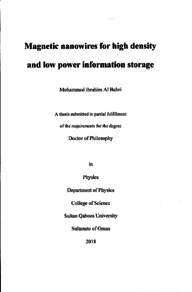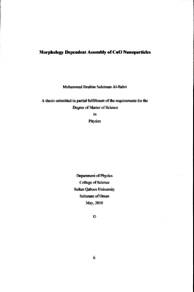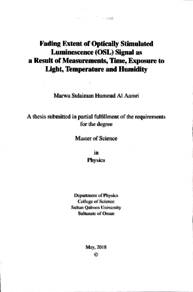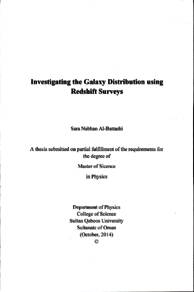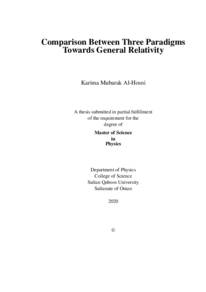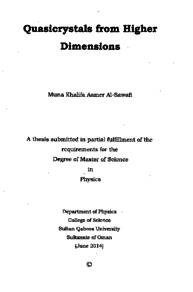Document
Magnetic nanowires for high density and low power information storage.
Publisher
Sultan Qaboos University
Gregorian
2018
Language
English
English abstract
Magnetic domain wall (DW) based devices have been intensively studied recently for both fundamental research and technological applications. It is of interest to understand and control the magnetization reversal and the pinning of DWs in magnetic nanowires. A main focus of this work lies on proposing a new scheme with stepped region to control the DW at a desired position. This scheme has a lot of advantages such as the simplicity of fabrication, the pinning strength could be adjusted laterally and vertically is the same time. Furthermore, this scheme opens the door for future memories to increase the storage density by increasing the number of bits per cell. DW pinning and depinning field at stepped nanowires for in-plane anisotropy is studied by micromagnetic simulation and experimentally. The simulation was carried out by using objectoriented micromagnetic framework (OOMMF) to investigate the parameters of DW pinning and its stability at stepped area. We found that, DW pinning depends on the depth of step (d) and the length() of the stepped region. For every value of d and has the threshold current density or critical current density which is the maximum value of DW pinning current density. Therefore, DW pinning increases by increasing dand decreasing I. In addition, DW pinning at stepped area depends on the magnetic materials properties such as magnetic anisotropy (R) and saturation magnetization (M). By varying Kvalues starting from low values, we found two kinds of Dw motions. For K, values 3.5 10 m. DW moves freely through the stepped area to the end of nanowire without any effectiveness of constricted area. Thus, we found from plotting Dw average speed verses current density an almost lincar behavior of DW movement in contrast, we found for 2 33x10' ' that DW was pinned at stepped region for current density values less than critical current density value. By increasing the current density beyond a critical value, DW is released from the stepped area and moves to the end of nanowire. Similar to investigation, M. effectiveness on DWpinning was studied. We found that for M.values less than 560 K m , no W pinning could be seen at stepped arca. While for M values greater than 560 LA, DW pinned at the stepped area and this pinning strength increases by increasing M. values. For a good performance of the memory device, it is also important to store more than I bit/cell. For this purpose, we investigated the possibility of storing six states using a nanowire with four constricted regions. We observed that, by increasing the values of current density, DW moved from one step to another where the pinning current density is about 1x102 A/m2.
Experimentally, devices were made by using electron beam lithography. DW pinning and depinning fields were investigated by using different techniques. Scanning electron microscopy (SEM) was used to check the edge roughness of the nanowires after development of the resist and the etching processes. To measure the depinning magnetic field (Hap) over the steps of nanowires, magneto optical Kerr effect (MOKE) was used. We found that. Hap increases by increasing dand decreasing 1. To investigate multi-bit per cell, two types of nanowires were fabricated. Nanowires with same step sizes and others with different step dimensions. With the same step dimensions, all steps have the same Hayfield. Therefore, DW after depinning the first step, it moves to the end of nanowire without any chance of pinning at any of other steps. In contrast, with different step sizes nanowires, DW has different Hap from one step to another. This gives a possibility to explore six states with four stepped areas. Moreover to confirm that DW is pinned at the stepped area and it stays there for a long time, magnetic force microscopy was used.
To examine the nanowire thickness on the depinning field, nanowires with different thickness were patterned. We found that, Hip increases by increasing the structure thickness.
Finally, for understanding DW dynamics at stepped area and its type, simulation work was done for nanowire with the same magnetic properties of the material used in experimental part and with same device dimensions. Vortex DW type was found and different behaviours of DW at stepped area were observed.
Member of
Resource URL
Category
Theses and Dissertations

